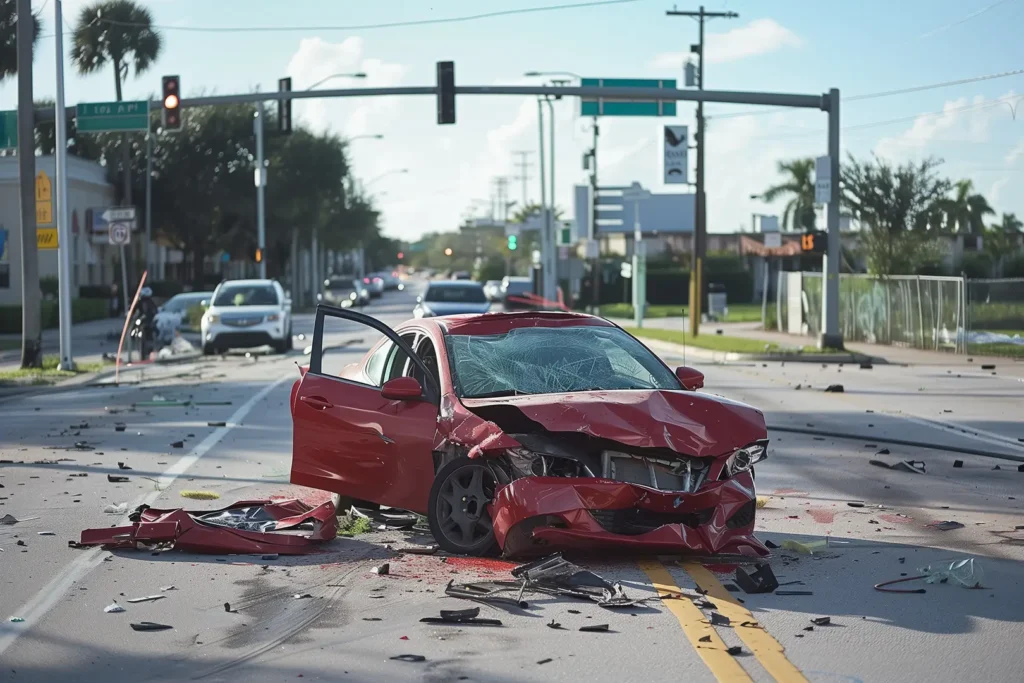As a Florida motorcyclist, you know that the open road is a great way to explore the Sunshine State.
But before you hit the highway, it’s important to make sure you have the right insurance coverage.
Auto insurance for motorcycles in Florida is a must-have for any rider, providing protection from liability and other risks.
In this guide, we’ll walk you through the basics of motorcycle insurance in Florida, so you can make sure you’re properly covered.
From understanding the different types of coverage to finding the best rates, we’ll help you make sure you have the right insurance for your ride.
Understanding the Basics of Auto Insurance for Motorcyclists in Florida
The basics of auto insurance for motorcyclists in Florida are somewhat unique compared to other states. The state does not require motorcycle insurance for riders. However, there can be penalties for not having insurance if you’re involved in an accident.
When registering a motorcycle with the Department of Motor Vehicles (DMV), unlike with cars, you aren’t required to show proof of insurance coverage. However, it’s crucial to understand that not having insurance could expose you to significant financial risks should an accident occur.
Motorcyclists also have the option to self-insure by obtaining a self-insurance certificate from the Bureau of Financial Responsibility. This typically requires demonstrating substantial financial resources.
Despite not being mandatory, many Florida motorcyclists opt to secure insurance voluntarily to protect themselves financially.
Various types of coverage are available:
- Liability Insurance: This covers bodily injury and property damage that you may cause to others in an accident where you’re at fault.
- Comprehensive Coverage: This provides compensation if your vehicle is damaged by fire, hail, theft, vandalism and more.
- Collision Coverage: If your motorcycle is damaged in a collision with another vehicle or object, this coverage can help pay for repairs or replacement.
- Uninsured/Underinsured Motorist Coverage: This covers your injuries and damages if you’re involved in an accident with a driver who doesn’t have insurance or whose insurance isn’t sufficient to cover your costs.
Remember, each policy will vary based on the insurer and the individual policyholder’s needs. Always review your policy thoroughly to understand what is and isn’t covered.
Comparing Different Types of Motorcycle Insurance Coverage
Motorcycle insurance in Florida, while not legally required, is highly recommended given the risks associated with riding.
There are several types of coverage available:
- Liability Insurance: This covers bodily injury and property damage that you may cause to others in an accident where you’re at fault.
- Comprehensive Coverage: This provides compensation if your bike is damaged or lost due to non-collision incidents such as fire, theft, vandalism, wind, hail, or other covered events.
- Collision Coverage: If your motorcycle is damaged in a collision with another vehicle or object, this coverage can help pay for repairs or replacement.
- Uninsured/Underinsured Motorist Coverage: This covers your injuries and damages if you’re involved in an accident with a driver who doesn’t have insurance or whose insurance isn’t sufficient to cover your costs.
- Medical Payments Coverage: This covers the cost of necessary medical care you receive as a result of a motorcycle accident and can be used regardless of who is at fault.
- Personal Injury Protection (PIP): While PIP is generally not available or required for motorcycles in Florida, some carriers might offer it. PIP covers medical expenses, lost wages, and other out-of-pocket costs regardless of who was at fault in the accident.
It’s important to remember that each policy will vary based on the insurer and the individual policyholder’s needs.
Always review your policy thoroughly to understand what is and isn’t covered.
Factors That Affect Motorcycle Insurance Rates in Florida
There are several factors that can affect motorcycle insurance rates in Florida:
- Coverage Amounts: The more coverage you have, the higher your premium will be.
- Past Claims: If you’ve made claims in the past, insurers may consider you a higher risk and charge more.
- Driving History: A clean driving record can help keep your premiums low. Accidents, traffic violations, and DUIs can all increase your rate.
- Value of Your Motorcycle: More expensive bikes typically cost more to insure because they’d be more costly to repair or replace.
- Age: Younger riders often face higher premiums because they’re considered less experienced and therefore more risky.
- Length of Motorcycle Riding Season: The longer the riding season, the more chances there are for accidents, which can lead to higher premiums.
- Crime Rate: If you live in an area with a high crime rate, your bike is more likely to be stolen or vandalized, which can increase your insurance costs.
- Location: Where you live in Florida can impact your rates. For example, areas with a higher population density or higher accident rates may have higher premiums.
- Type of Motorcycle: Different types of motorcycles carry different levels of risk. For example, sport bikes are often more expensive to insure than cruisers.
- Weather: Florida’s weather can also affect insurance rates. For example, the state’s hurricane risk could potentially influence premiums.
Remember, each insurance company uses its own formula to calculate premiums, so rates can vary significantly from one insurer to the next.
It’s always a good idea to shop around and compare quotes from multiple companies.
How to Choose the Right Motorcycle Insurance Policy
Choosing the right motorcycle insurance policy involves a careful evaluation of your needs, budget, and risk tolerance.
Here are some steps to follow:
- Understand the Different Types of Coverage: As mentioned in the search results, there are several types of coverage available including liability, collision, comprehensive, uninsured/underinsured motorist, and medical payments. Understanding what each type covers can help you decide which ones you need.
- Evaluate Your Needs: Consider factors like the value of your bike, how often you ride, where you ride, and your financial situation. For example, if you have a high-value bike and ride frequently in high-traffic areas, you might want more coverage than someone with a lower-value bike who only rides occasionally.
- Compare Quotes: Get quotes from multiple insurance companies to ensure you’re getting the best price for the coverage you need. Remember, the cheapest policy isn’t always the best – you also want to consider the insurer’s reputation for customer service and claims handling.
- Consider Deductibles: The deductible is the amount you’ll pay out of pocket before your insurance kicks in. Higher deductibles typically mean lower premiums, but make sure it’s an amount you can afford to pay if you need to make a claim.
- Take Advantage of Discounts: Many insurers offer discounts for things like having a clean driving record, insuring more than one motorcycle with the same company, or completing a motorcycle rider training course.
- Review and Adjust Your Policy Regularly: Your insurance needs can change over time, so it’s a good idea to review your policy regularly and adjust your coverage as necessary.
Remember, the goal is to find a policy that provides the protection you need at a price you can afford.
Tips for Saving Money on Motorcycle Insurance in Florida
Motorcycle insurance in Florida can be expensive, but there are ways to save money. One of the best ways to save money on motorcycle insurance is to look for discounts. Many insurance companies offer discounts for safe driving, taking a motorcycle safety course, and having multiple policies with the same company. It’s also important to compare rates from different companies to make sure you’re getting the best deal. Shopping around and comparing rates can help you find the best coverage for the lowest price. Additionally, it’s important to review your policy regularly to make sure you’re getting the coverage you need at the best rate. By taking the time to research and compare rates, you can save money on motorcycle insurance in Florida.
In conclusion, insuring your ride is an important step for any Florida motorcyclist.
Understanding the basics of auto insurance for motorcyclists in Florida, comparing different types of motorcycle insurance coverage, and being aware of factors that affect motorcycle insurance rates in Florida are all important steps in finding the right policy for you.
Additionally, following the tips for saving money on motorcycle insurance in Florida can help you get the coverage you need at a price you can afford.
Ultimately, the right motorcycle insurance policy should provide you with the coverage you need to protect yourself and your ride.






